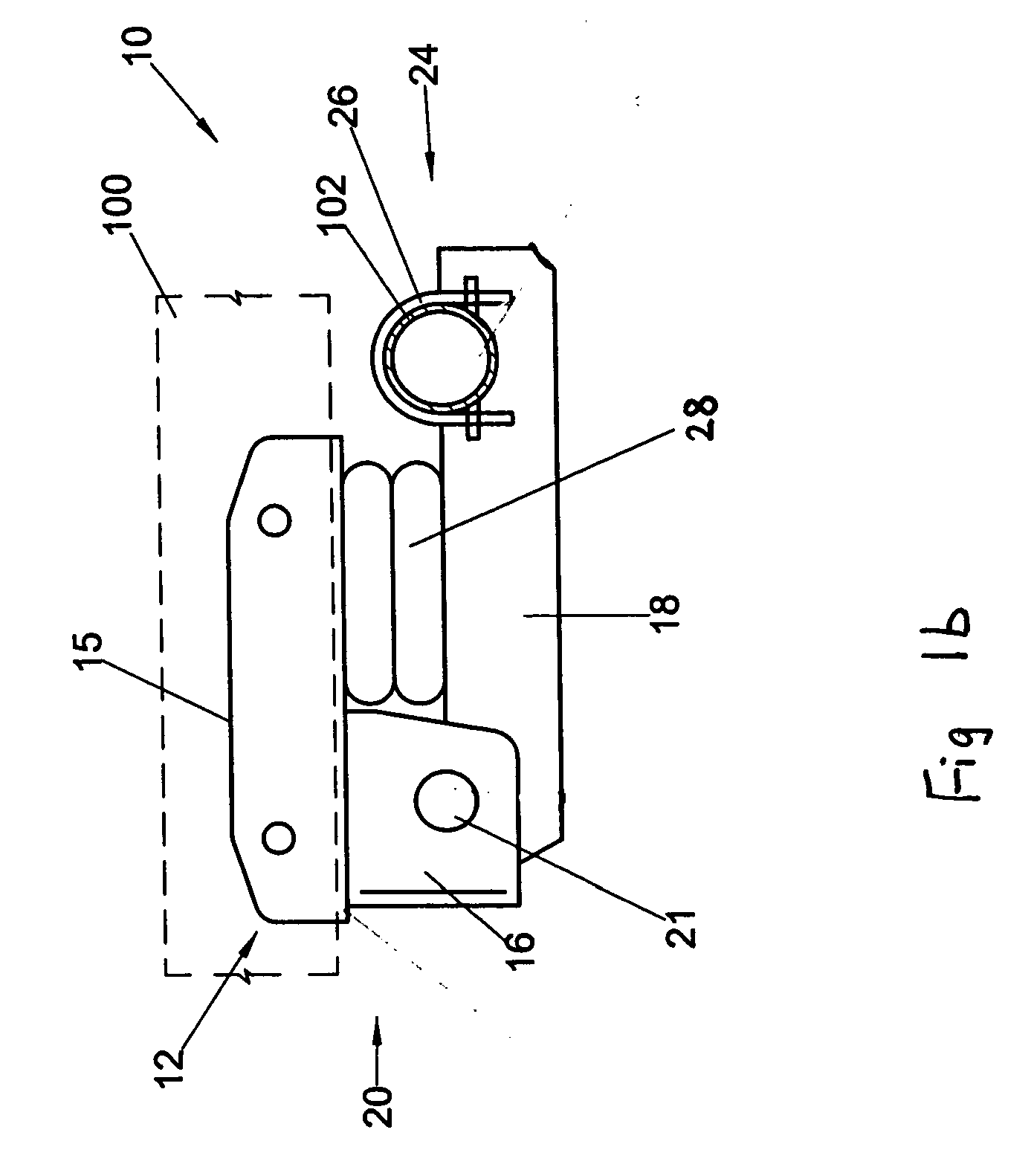Suspension system for a vehicle
a suspension system and vehicle technology, applied in the direction of rigid suspensions, suspensions, resilient suspensions, etc., can solve the problems of poor ride quality for vehicle occupants, low suspension system performance, and poor suspension quality
- Summary
- Abstract
- Description
- Claims
- Application Information
AI Technical Summary
Benefits of technology
Problems solved by technology
Method used
Image
Examples
Embodiment Construction
[0028] Generally, the present invention provides a novel suspension system for a vehicle.
[0029]FIGS. 1a to 1c provide, respectively, a perspective view and two side views of a suspension system which is to be installed at one end of an axle of a vehicle. FIG. 1b is a side view of the suspension system with the elastomer spring compressed and FIG. 1c is a side view of the suspension system with the elastomer spring uncompressed.
[0030] In the present application, the term suspension system has been used to describe the suspension system for one end of a vehicle axle. However, as will be appreciated by one skilled in the art, a pair of suspension systems are generally mounted at opposite ends of an axle to provide adequate support and stability for a vehicle. The axle is a fixed bar or beam with bearings at its ends to mount the axle to a tire, or wheel, at each end about which the tires rotate. Although it is not common for only one suspension system to be mounted to an axle, this e...
PUM
 Login to View More
Login to View More Abstract
Description
Claims
Application Information
 Login to View More
Login to View More - R&D
- Intellectual Property
- Life Sciences
- Materials
- Tech Scout
- Unparalleled Data Quality
- Higher Quality Content
- 60% Fewer Hallucinations
Browse by: Latest US Patents, China's latest patents, Technical Efficacy Thesaurus, Application Domain, Technology Topic, Popular Technical Reports.
© 2025 PatSnap. All rights reserved.Legal|Privacy policy|Modern Slavery Act Transparency Statement|Sitemap|About US| Contact US: help@patsnap.com



